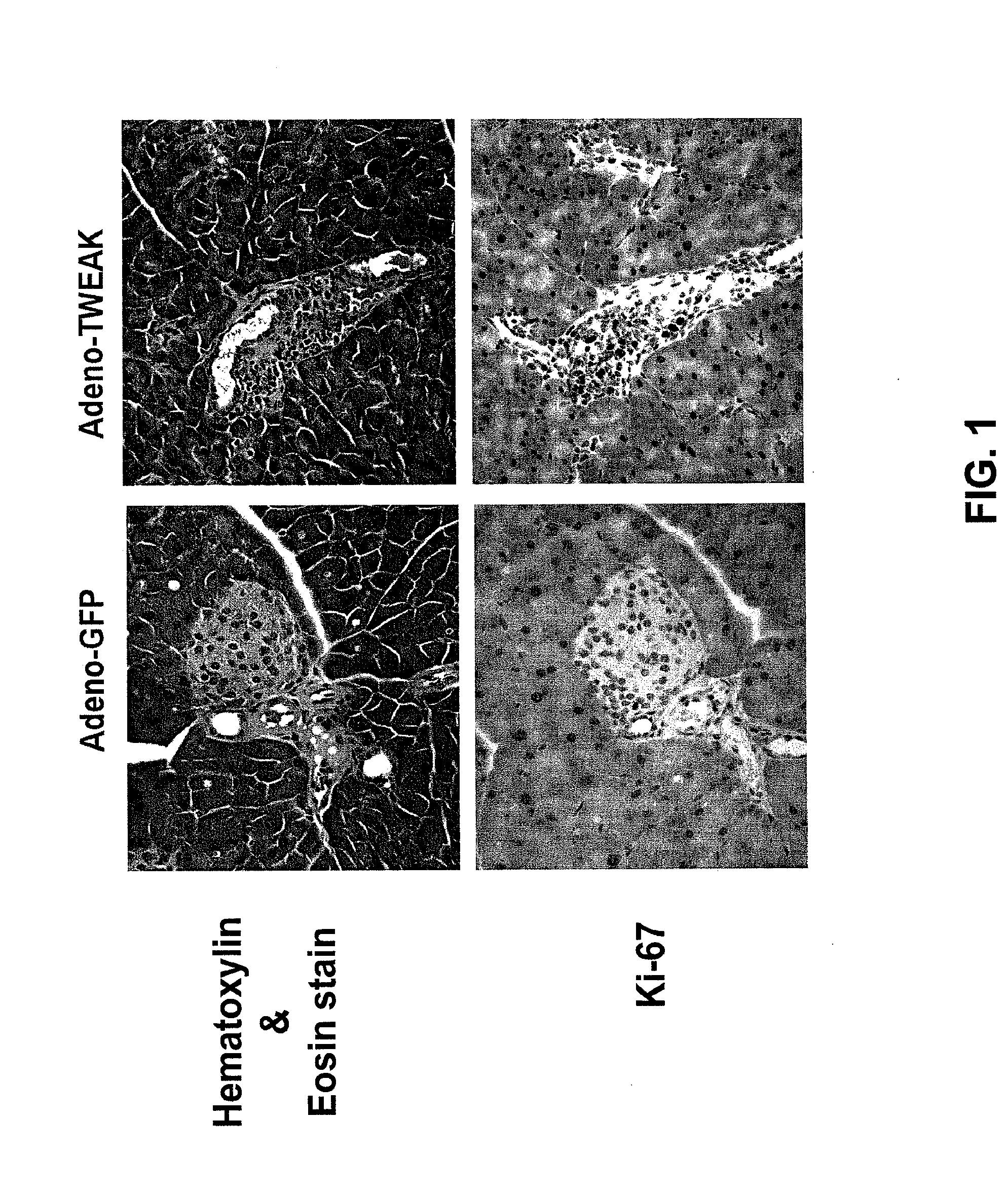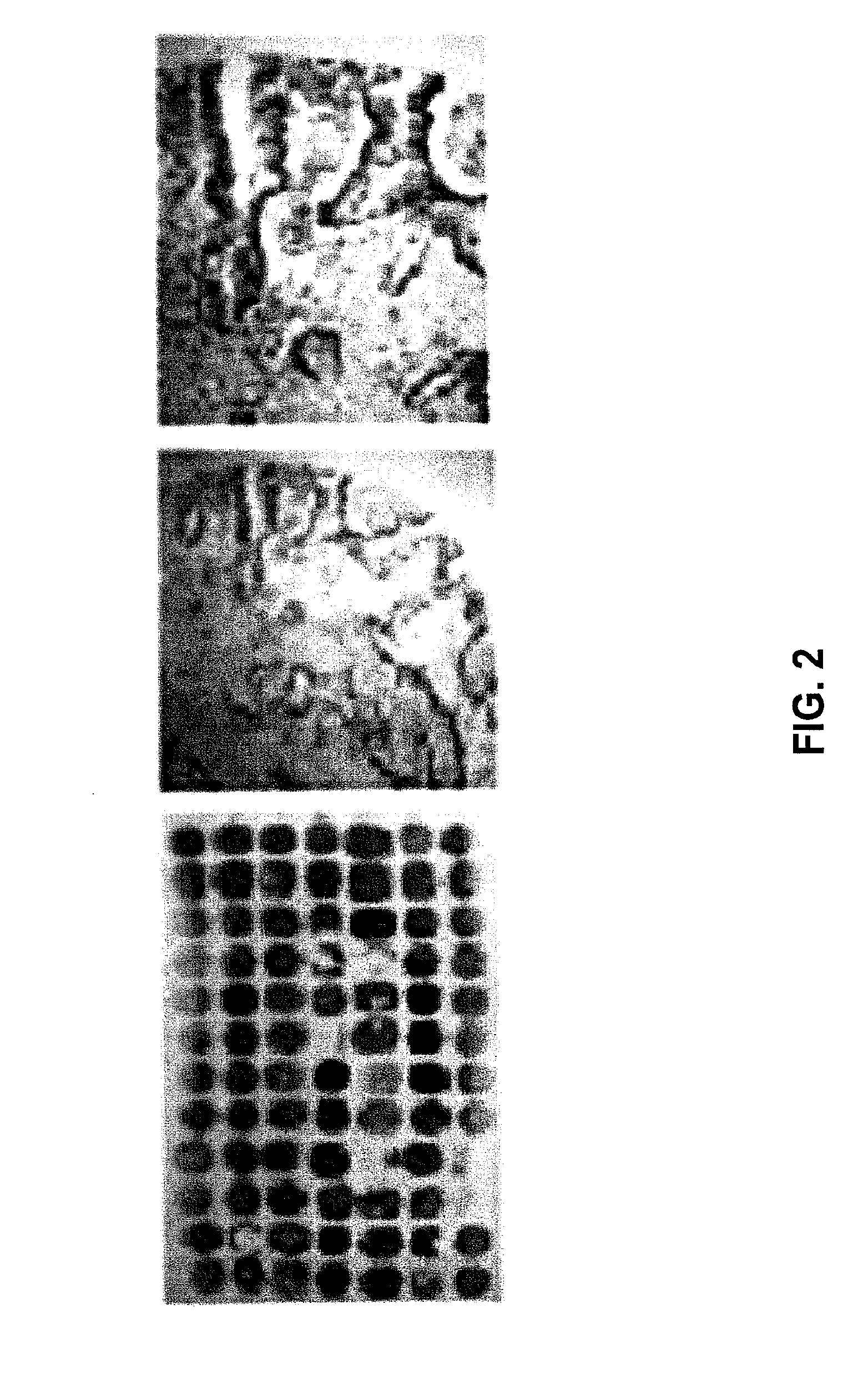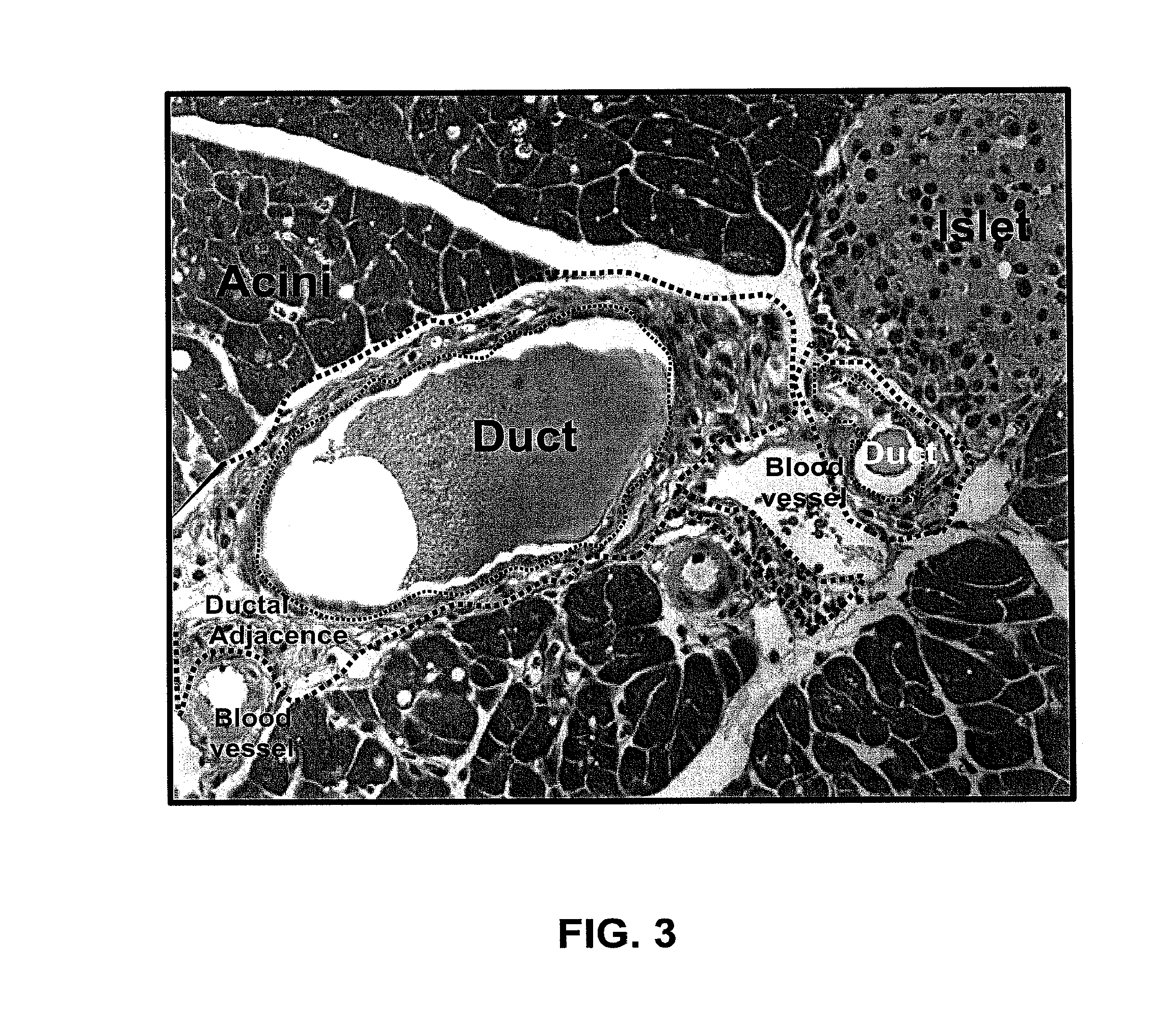Methods for pancreatic tissue regeneration
a pancreatic and tissue technology, applied in the field of pancreatic tissue regeneration, can solve the problems of cell transplant-based therapies facing particularly significant difficulties, limited application of this therapy, and both approaches limited
- Summary
- Abstract
- Description
- Claims
- Application Information
AI Technical Summary
Benefits of technology
Problems solved by technology
Method used
Image
Examples
example 1
TWEAK Overexpression Induces Pancreatic Ductal Cell Hyperplasia
[0123]Novel strategies to expand precursor cells in the pancreas would constitute a significant advance towards treatment of diabetes, which result from an inadequate amount of insulin-producing β-cells. TWEAK is a member of the TNF superfamily of cytokines that mediates pleiotropic effects, including proinflammatory activities, angiogenenesis, and the regulation of cell survival, proliferation and death, through its receptor TWEAK-R (FGF-inducible molecule 14; Fn14). TWEAK-R is expressed by epithelial and mesenchymal cells and signals via the NF-κB, MAPK and AKT pathways. Interestingly, TWEAK-R expression is normally expressed at relatively low levels and is highly upregulated in contexts of tissue injury and regeneration, and chronic inflammatory disease, supporting a physiological role for this pathway in coordinating acute inflammation and tissue repair and pathological role in chronic inflammatory disease. TWEAK-R i...
example 2
TWEAK-R is Expressed on Pancreatic Duct-Derived Cells
[0126]The expression levels of TWEAK-R were measured by mRNA microarray analysis in pancreatic duct cells isolated from normal rat pancreas or 2¾ days after partial pancreatectomy. Microarray analysis was performed using standard procedures (see Flamez et al., Diabetes, 51: 2018-2024 (2002); and Webb, et al., Proc Natl Acad Sci USA, 97: 5773-5778 (2000)). The normal pancreatic and post-pancreatectomy duct cells produced detectable TWEAK-R mRNA, while isolated pancreatic islets did not.
[0127]TWEAK-R is expressed on a high frequency of pancreatic adenocarcinomas (Han et al., Cancer Res., 62(15): 4532 (2002)), which are believed to originate from ductal cells. FIG. 2 shows the expression of TWEAK-R in human pancreatic tumors, detected by immunohistochemical staining of a human pancreatic tumor tissue microarray. Sixteen of 42 tissue samples (42%) were positive for TWEAK-R.
example 3
Fc-TWEAK Induces Proliferation of Cells in Pancreatic Duct Epithelium and Ductal Adjacent Regions
[0128]Eight- to ten-week old adult C57BI / 6 female mice were injected with 200 μg of Fc-TWEAK or control protein P1.17 in either a single injection (acute treatment), or twice per week following an initial injection (chronic treatment; injections were performed at day 0, 3, 7, 10, and 14). Pancreatic tissue was surgically obtained from Ketamine / Xylazine-anesthetized mice at various time points and mice were sacrificed immediately after pancreatic tissue was removed. Mice did not receive an injection of Fc-TWEAK or P1.17 on the day of sacrifice. Tissue samples were fixed, sectioned, and immunostained for the proliferation marker Ki-67.
[0129]FIG. 3 shows a representative hematoxylin and eosin (H & E) stained mouse pancreas cross section. The pancreas consists of acini, ducts, and islets. Cells around the pancreatic duct which do not show the typical structure of acinar, islet, or blood vess...
PUM
| Property | Measurement | Unit |
|---|---|---|
| surface area | aaaaa | aaaaa |
| concentrations | aaaaa | aaaaa |
| concentrations | aaaaa | aaaaa |
Abstract
Description
Claims
Application Information
 Login to View More
Login to View More - R&D
- Intellectual Property
- Life Sciences
- Materials
- Tech Scout
- Unparalleled Data Quality
- Higher Quality Content
- 60% Fewer Hallucinations
Browse by: Latest US Patents, China's latest patents, Technical Efficacy Thesaurus, Application Domain, Technology Topic, Popular Technical Reports.
© 2025 PatSnap. All rights reserved.Legal|Privacy policy|Modern Slavery Act Transparency Statement|Sitemap|About US| Contact US: help@patsnap.com



